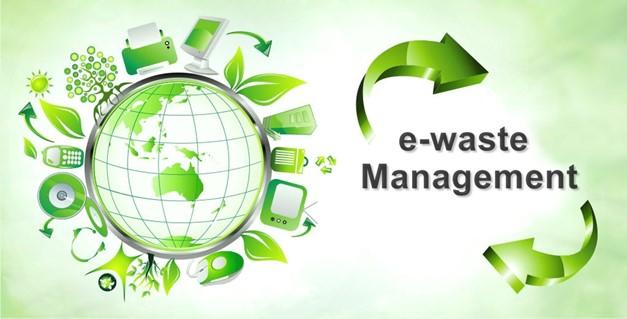E-Waste Management Market To Experience A Hike In Growth By 2032

E-Waste Management Market: An In-Depth Global Analysis
The e-waste management market has rapidly evolved into one of the most crucial sectors in the global environmental and waste management landscape, driven by the escalating proliferation of electronic devices and the corresponding surge in electronic waste. As consumer electronics become more affordable and technology turnover accelerates, the disposal and recycling of obsolete electronic devices have become a pressing concern. E-waste comprises discarded electrical or electronic devices such as smartphones, laptops, televisions, refrigerators, and other gadgets, many of which contain toxic substances like mercury, lead, and cadmium. The improper disposal of these materials poses significant health and environmental hazards. Consequently, the global e-waste management market has gained momentum, with countries adopting stringent regulations and innovative recycling processes to tackle the growing mountain of electronic waste. The global e-waste management market size was valued at USD 72.87 billion in 2023 and is expected to grow at a compound annual growth rate (CAGR) of 7.78% from 2024 to 2032, fueled by increasing environmental awareness, government initiatives, and advancements in recycling technologies.
Key Players in the E-Waste Management Market
The e-waste management ecosystem consists of numerous global and regional players that offer services including collection, recycling, refurbishing, and safe disposal of electronic devices. Some of the most prominent companies in this market include Sims Limited, Enviro-Hub Holdings Ltd., Aurubis AG, Electronic Recyclers International (ERI), Umicore SA, Veolia Environnement SA, Stena Metall AB, Tetronics International, Waste Management, Inc., and Global Electric Electronic Processing Inc. These players are increasingly investing in advanced e-waste recycling facilities, expanding their operations geographically, and forming strategic alliances to strengthen their market position. For example, Sims Limited operates a network of state-of-the-art recycling centers worldwide and has positioned itself as a pioneer in circular economy practices. Similarly, Umicore SA focuses on the recovery of precious metals from used electronic products and has developed environmentally sustainable refining techniques that contribute to reducing the global environmental footprint of e-waste.
[PDF Brochure] Request for Sample Report:
https://www.marketresearchfuture.com/sample_request/21978
Market Segmentation of the E-Waste Management Industry
The global e-waste management market is segmented based on material type, source, and region. By material type, the market is categorized into metals, plastics, and glass. Metals, particularly copper, gold, and aluminum, account for a significant portion of e-waste by value due to their high recyclability and reuse potential. Based on source, the market is divided into household appliances, consumer electronics, and industrial electronics. Among these, household appliances such as refrigerators, washing machines, and air conditioners dominate the e-waste volume globally. Regionally, the market is analyzed across North America, Europe, Asia-Pacific, Latin America, and the Middle East & Africa. Asia-Pacific currently leads the global e-waste generation, owing to high population density and increased consumption of electronic devices, particularly in countries like China and India. However, North America and Europe are at the forefront in terms of e-waste recycling and management due to the enforcement of robust environmental regulations and active participation from consumers and corporations alike.
Market Dynamics Driving E-Waste Management Growth
The dynamics of the e-waste management market are shaped by a blend of environmental, economic, and technological factors. On the demand side, the exponential growth in consumer electronics consumption, short device lifecycles, and rapid technological advancements have significantly contributed to the surge in electronic waste. Moreover, increasing consumer awareness regarding the harmful effects of improper e-waste disposal and the value of recycling valuable materials has further boosted market demand. On the supply side, government policies, such as the Extended Producer Responsibility (EPR), have mandated manufacturers to take accountability for their products even after they reach end-of-life, thus incentivizing investment in collection and recycling systems. Technological innovations in waste sorting, automated dismantling, and metal extraction processes have greatly improved the efficiency and profitability of e-waste recycling operations. However, the market still faces challenges such as informal recycling practices in developing nations, lack of standardized regulations globally, and limited consumer participation in recycling programs. Addressing these challenges is critical for long-term market sustainability and environmental protection.
Recent Developments in the E-Waste Management Market
The e-waste management sector has witnessed several recent developments that underscore its dynamic nature and growing global importance. In 2024, Sims Limited announced the opening of a new automated e-waste recycling facility in Singapore, equipped with AI-driven sorting systems and advanced shredders that significantly enhance the recovery rate of precious metals. In the same year, Veolia partnered with Apple to expand its e-waste collection and recycling efforts across Europe, aiming to recover rare earth materials from used devices to create a closed-loop supply chain. Meanwhile, Electronic Recyclers International (ERI) launched an innovative blockchain-based platform that tracks the lifecycle of electronic devices from production to recycling, ensuring transparency and compliance with e-waste regulations. Governments have also played a pivotal role in shaping the industry’s progress.
For instance, the European Union updated its Waste Electrical and Electronic Equipment (WEEE) Directive to include stricter recycling targets and increased accountability for producers. In India, the Ministry of Environment introduced a digital e-waste tracking system to curb illegal dumping and promote formal recycling. These developments indicate a paradigm shift towards smarter, more sustainable, and circular e-waste management practices that benefit both the environment and the economy.
Browse In-depth Market Research Report:
https://www.marketresearchfuture.com/reports/e-waste-management-market-21978
Contact Us:
Market Research Future (Part of Wantstats Research and Media Private Limited)
99 Hudson Street, 5Th Floor
New York, NY 10013
United States of America
+1 628 258 0071 (US)
+44 2035 002 764 (UK)
Email: [email protected]
- Fashion
- Art
- Causes
- Crafts
- Dance
- Drinks
- Film
- Fitness
- Food
- Giochi
- Gardening
- Health
- Home
- Literature
- Music
- Networking
- Altre informazioni
- Party
- Religion
- Shopping
- Sports
- Theater
- Wellness
